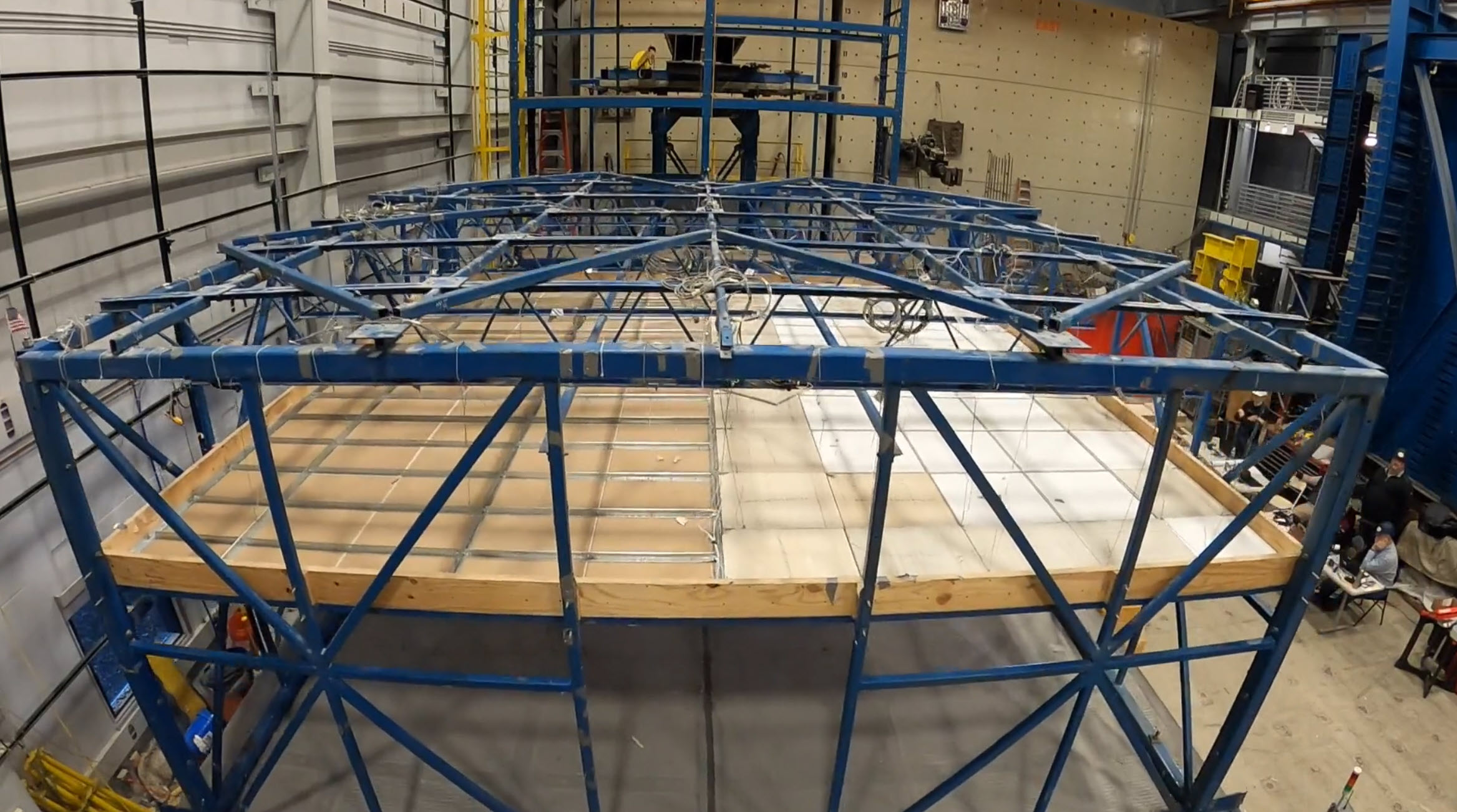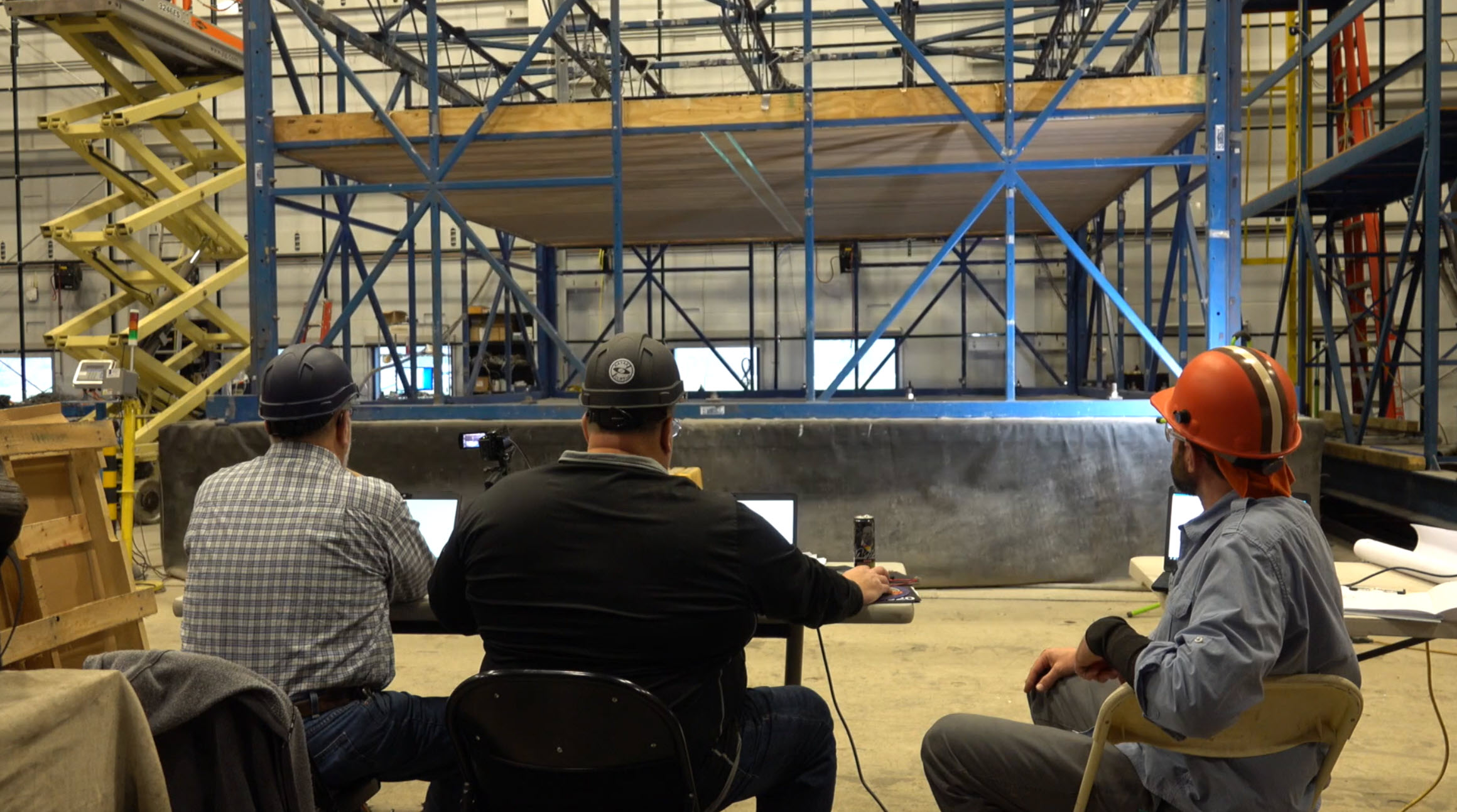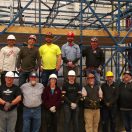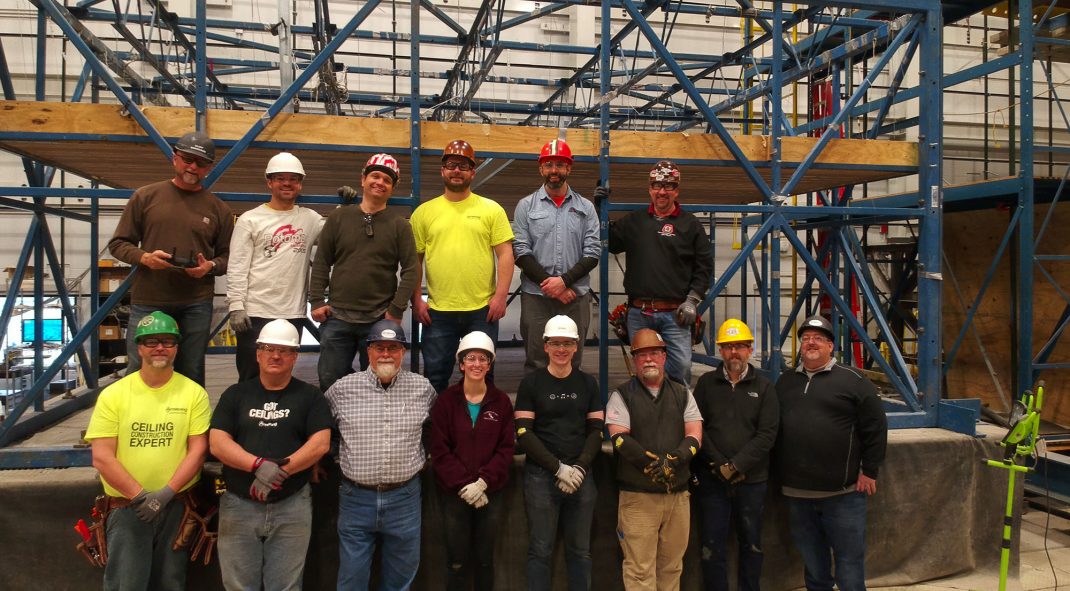Seismic Testing in Buffalo
Have you ever wondered what it takes for a building product to meet strict seismic Class A standards? Cliff Snedeker, Senior Technical Sales, and the construction team from Armstrong traveled to the University of Buffalo, to witness firsthand how Armstrong Ceiling Solutions is setting the standard with an impressive portfolio consisting of seismically tested, high-quality ceiling systems in the industry.
This article takes an in-depth look at seismic testing from many perspectives, follow along to learn more about the process and what it takes to meet Class A standards.
Behind the Scenes Preparations
It takes a great deal of coordination among several teams of experts before the seismic shaking can begin for each project. From ordering, assembling, and delivering the Armstrong products to custom-building each installation for testing - it's no small undertaking. All this prep work makes it possible to shake test as many as 15-400 square foot installations in one short week.
According to Paul Hough, Coordinator of Seismic Testing at Armstrong, all seismic testing is performed on a table that consists of several hydraulically driven actuators underneath it and provides shaking motion in six different directions. The size of the table is somewhat small, only 6'x6' or 8'x8', in comparison to the transition frame that expands the worksurface to about 25'x25'. He further explains that another 20'x20' custom frame is attached to the surface and designed to resemble walls of a building, and provides 400 square feet of ceiling space, which is ideal for testing Armstrong products. Paul’s crew can handle eight to fifteen shake tests in any given week, depending on the building specs and complication level of each build.

Shake It, Break It, Analyze It
This seismic testing system, with the actuators linked to a computer system, performs exactly what it's designed for - simulation of an earthquake.
"We shake it, break it, then analyze it, then we tear it down, and we start all over." - Paul Hough, Coordinator of Seismic Testing
Paul states, "we shake it, break it, then analyze it, then we tear it down, and we start all over." Their main objective is to evaluate building products to ensure items are safe for consumer use.
Armstrong Custom Wood Ceiling Seismic Test
John Dose, Armstrong Senior Technical Sales, took charge of the build for the seismic test of a wood ceiling constructed of heavy-duty grid and mains two foot on center. He explains that every test has its own unique set of drawings, depending on the products used in the build. He further states that Armstrong is "well ahead of the curve on standard testing," with the ultimate goal of providing seismically approved products for installations in seismic zones like California.
Up Close and Person with the Shake Table
Cliff Snedeker and his team not only constructed several builds using Armstrong products but also had the opportunity to observe the rigorous shake testing of the products during each seismic test. He gets close-up and personal during several of the seismic tests. The crew tested one-inch steel transition molding, which transitions one inch from a drywall ceiling to an acoustical ceiling - taking the shake test to the max of 3.0 G.
The results? They far exceeded the shake of an actual earthquake, according to Cliff.
During yet another shake test, Paul Hough, Codes and Standards Manager, explains the process that uses a series of "designed" earthquake simulations lasting 30-seconds to test Armstrong ceiling products. He goes on to clarify that the "designed" earthquakes come from a spectral response acceleration that comes directly from geological survey maps. A spectral response acceleration is determined using a complex formula that calculates ground motion acceleration and percent of G force and refers to the shaking experienced by a building during an earthquake.
He further explains that each shake test goes through several rounds of testing, with a low of .25 G up to a maximum of 3.0 G. The amount of shake gets progressively stronger with higher acceleration and an increase in violent shaking in all directions. The results of this process reveal if any damage occurs during the simulation. The seismic specialists evaluate critical areas of the ceiling after each test to see if the grid has been compromised, and they assess the ceiling panels to see if any are dislodged and fell to the floor during testing.

Armstrong Ceiling Solutions Technical Services Manager, Jason Ameen, explains that 1.75 G is the minimum threshold of acceptance for Armstrong products. He further explains that over the years, the design of ceilings has evolved into more complex configurations than ever before, making it difficult to calculate or model. Seismic testing not only removes any speculation about strength and performance but also expands the Armstrong portfolio of seismically safe products, which allows our customers to design and install with confidence.
This in-depth look at the seismic testing process demonstrates our commitment and dedication to performance, comfort, and safety for our customers. At Armstrong Ceiling Solutions, we don’t just help you build it - we help you Build It Better.







